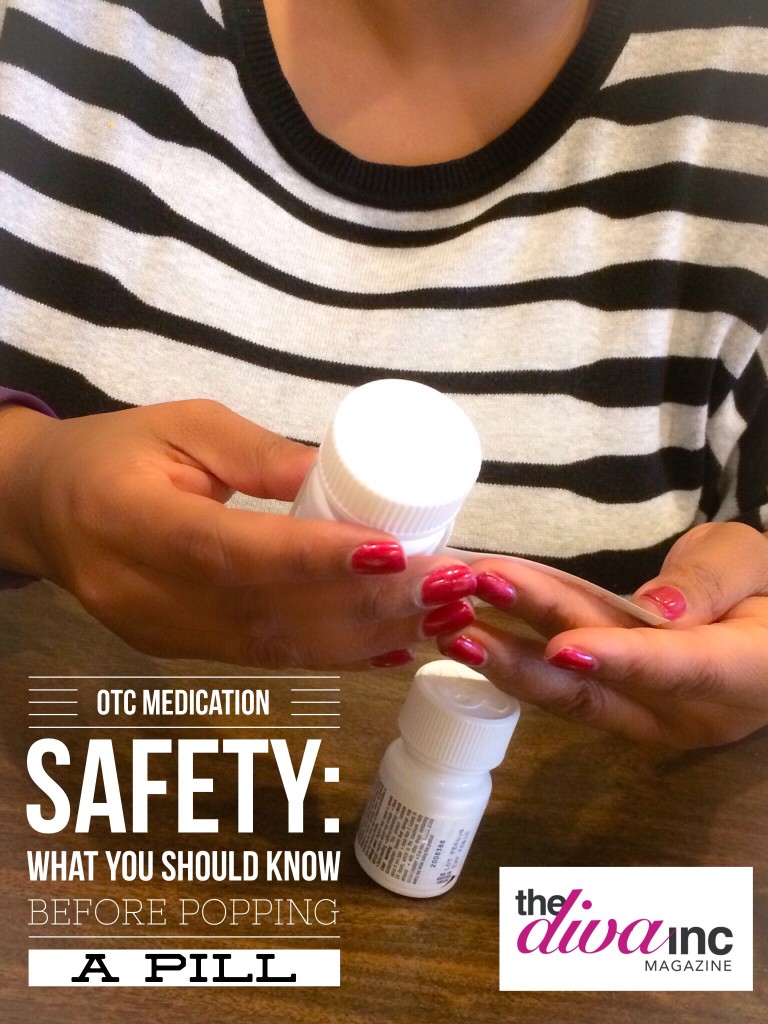 We recently attended an OTC Medication Safety conference in the Bay Area hosted by Johnson & Johnson Consumer Inc., McNeil Consumer Healthcare Division (the makers of Tylenol & Motrin) and we learned so much about OTC medicine safety that we had to share this information with our readers. You may be thinking, “I take OTC medications all the time. I know what I’m doing.” We thought the same thing. But after hearing from Dr. Darria and the reps from McNeil, we are changing the way we take OTC meds.
We recently attended an OTC Medication Safety conference in the Bay Area hosted by Johnson & Johnson Consumer Inc., McNeil Consumer Healthcare Division (the makers of Tylenol & Motrin) and we learned so much about OTC medicine safety that we had to share this information with our readers. You may be thinking, “I take OTC medications all the time. I know what I’m doing.” We thought the same thing. But after hearing from Dr. Darria and the reps from McNeil, we are changing the way we take OTC meds.
During the conference we sat down with McNeil reps, fellow bloggers and Dr. Darria to discuss what we should know about taking OTC meds, why it is important to always read the label and how to manage pain appropriately.
After the conference we sat down with Dr. Darria for a Q&A so that we can give you some valuable and educational information on what you should know before popping a pill.
TDIM: Why is it important for consumers to read OTC medication labels even when they have taken the medication before?
Dr. Darria: 1 in 4 Americans report that they don’t think it’s important to look at labels the second time they buy an OTC [medication]. But, the reality is, medicine labels and formulations may change over time – and of course, so does our health. So, even if you use the same pain reliever every month, make it a point to read the label again. That’s especially important after buying a new bottle. Double check the dosages and the 24-hour limit, if there are new warnings or directions, and consider any new health conditions [you have] or medications [you are taking].
TDIM: At the event, we discussed that 39% of Americans believe that the directions on OTC medicine labels are suggestions. How important is it to follow the directions on the labels?
Dr. Darria: You’re totally right – 2 in 5 (39%) reported seeing OTC [medicine] directions as just guidelines. As an ER doctor, I think it’s SO important to discuss this. OTCs are a great resource for us all to use for first-line treatment, but they are still medications. Like all medications, they also have risks if they’re not taken according to the instructions. When I give OTC medications to my family or take them myself, I always double-check the label and dose, and never exceed the single recommended dose or 24 hour maximum. That may seem redundant for a physician to do, but it’s because I know how important it is that we use OTCs responsibly. I tell my patients the very same thing – following the label is the best way to get the greatest symptom relief, and avoid unnecessary risks. Remember, if you have any questions about the label or find anything confusing, ask your physician, other provider, or pharmacist.
TDIM: What dangers may ensue if a consumer does not follow the label properly?
Dr. Darria: OTC medicines are a great resource for all of us, but I remind all of my patients that they are still medicine! That means that if you don’t follow the label and take too much, too frequently, for too long, or have health conditions or medicines that can interact with it, you’re unnecessarily putting yourself at risk. Just because we don’t need a prescription to get them, doesn’t mean we should be any less careful. It’s very important for consumers to understand that each medicine works differently, and can have different effects on different parts of the body if taken inappropriately. The only way to know which is appropriate for your health is by looking at the label information. I know it can seem tedious to read, but if we can all spend time reading the nutrition labels for our cereal boxes or other foods, then we can definitely spend the minute it takes to review the label.
TDIM: How can consumers find out more about the active ingredients in OTC medications?
Dr. Darria: The “Active Ingredient” section is very important for everyone – even if they have absolutely no health problems – to read every time. That’s because the “Active Ingredient” is the part that will affect your body: will improve your symptoms, and could potentially put you at risk if you take too much of it. Hundreds of OTC and prescription medications have the same active ingredients in them, and if you’re not paying attention to this (especially around cold and flu season, when many of us take combo pills with multiple active ingredients), you can accidentally take two medications with the same active ingredient. In doing so, you’d potentially take twice the recommended safe dose. How do you stay safe? It’s simple – read this section EVERY time, pay extra attention if you’re taking more than one medication at the same time, and NEVER take two separate medicines at the same time that have the same active ingredient.
TDIM: Acetaminophen is commonly found in several OTC medications. What could happen if a consumer doubles up on taking Acetaminophen? (i.e. taking more than one brand of OTC medication that contains Acetaminophen)
Dr. Darria: Today, there are more than 500 prescription and OTC medicines that contain acetaminophen: TYLENOL®, NyQuil®, Percocet®, and Vicodin®, to name just a few. That’s because for many people, it is one of the safer medications when taken appropriately. However, every medicine has risks when not taken as instructed, and taking too much Acetaminophen in a single dose or over 24 hours could cause damage to your liver. That’s why it’s so crucial to read that label, pay attention to these dosage numbers, and never exceed them. I use OTCs in my household, and am a stickler for ALWAYS taking them appropriately.
TDIM: How important is it to read every label every time?
Dr. Darria: Very! I know it can seem like a hassle and you’re in a rush, or you may feel like you’ve taken the medication a hundred times. However, remember that things can change over time – doses or warnings may change on a new bottle, or your own health may change since the last time you took the medicine. There’s no way to memorize all of that information! I keep a small bottle of Ibuprofen in my purse for THOSE kinds of days – and even though I’ve reached into it many times before, I always check the pill size and dose I’m about to take before I take it, and I never exceed the single dose or 24-hour maximum limit. That’s because as an ER doctor, I know the benefit and symptom relief that OTCs can bring, and I know the risks of taking any medication inappropriately. The best way to use any medication safely – whether it’s OTC or prescription – is to review that label, and always take it as instructed.
Darria Long Gillespie, MD MBA FACEP, is an ER doctor, Mom, TV and media health expert and radio host, and Sharecare executive. Read more about Dr. Darria on her website drdarria.com.
For more information about Johnson & Johnson Consumer Inc., McNeil Consumer Healthcare Division visit their website mcneil-consumer.com.



